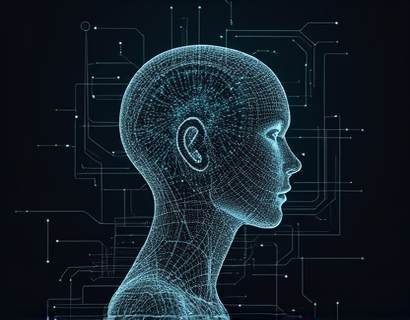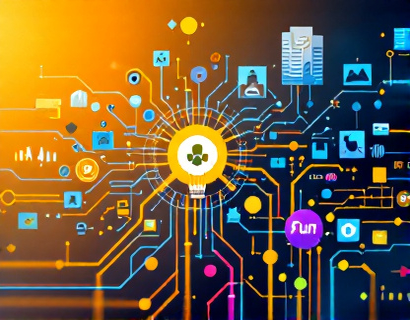Transforming Education with AI-Powered Chatbots: A Comprehensive Guide
The integration of artificial intelligence in education has opened new avenues for enhancing the learning experience. Among the various tools emerging in this space, AI-powered educational chatbots stand out for their ability to provide personalized, verified, and specialized insights to students, families, and educators. This article delves into the multifaceted benefits of these chatbots, focusing on how they are reshaping the educational landscape to ensure safety, engagement, and enhanced learning outcomes.
Understanding AI-Powered Educational Chatbots
AI-powered educational chatbots are sophisticated tools designed to interact with users through a conversational interface. These chatbots leverage natural language processing (NLP) and machine learning algorithms to understand and respond to user queries with accuracy and relevance. Unlike traditional Q&A systems, these chatbots can engage in multi-turn conversations, adapting to the context and nuances of each interaction. This capability makes them invaluable in the educational sector, where complex and varied information needs are commonplace.
Enhanced Learning Experiences
One of the primary advantages of AI-powered educational chatbots is their ability to offer enhanced learning experiences. By providing verified and specialized insights, these chatbots help students gain a deeper understanding of subjects that might be challenging or complex. For instance, a student studying environmental science can ask the chatbot about climate change, receive detailed explanations, and even explore case studies and real-world applications. This interactive approach not only makes learning more engaging but also reinforces knowledge through practical examples and discussions.
Specialized Insights for Different User Groups
AI educational chatbots are designed to cater to a diverse audience, including students, families, and educators. Each group has unique information needs, and these chatbots are equipped to address them effectively.
For Students
Students benefit from the chatbot's ability to provide immediate and accurate answers to their queries. Whether it's understanding a difficult concept in mathematics, getting help with a science experiment, or exploring historical events, the chatbot serves as a reliable resource. The conversational nature of the interface makes learning less intimidating and more approachable, encouraging students to ask more questions and explore topics in greater depth.
For Families
Families play a crucial role in a child's education, and AI chatbots can support this role by offering insights and resources that align with the curriculum. Parents can use the chatbot to understand their child's assignments, explore educational tools and apps, and even find activities to do together at home. This not only fosters a supportive learning environment but also helps parents stay informed and involved in their child's education.
For Educators
Educators can leverage AI chatbots to enhance their teaching methods and stay updated on the latest educational trends and technologies. The chatbot can provide lesson plan ideas, suggest interactive activities, and offer professional development resources. Additionally, educators can use the chatbot to gather feedback from students, analyze learning patterns, and tailor their instruction to better meet the needs of their students.
Ensuring Educational Safety and Engagement
Safety and engagement are paramount in the educational use of AI chatbots. To address these concerns, developers implement robust measures to ensure a secure and trustworthy environment for all users.
Content Verification
One of the key features of AI educational chatbots is their commitment to content verification. All information provided by the chatbot is cross-referenced with credible sources to ensure accuracy and reliability. This is particularly important in educational settings, where misinformation can lead to misunderstandings and misconceptions. By relying on verified data, the chatbot helps maintain the integrity of the learning process.
Child-Friendly Interface
Recognizing the need for a safe and child-friendly experience, many AI educational chatbots offer a specialized version designed specifically for younger users. This version includes features such as simplified language, age-appropriate content, and strict privacy controls. The chatbot is programmed to avoid sensitive topics and provide responses that are both educational and suitable for children. This ensures that young learners can explore and learn without exposure to inappropriate content or risks.
Promoting Edutainment
Edutainment, the fusion of education and entertainment, is a core principle behind the design of AI educational chatbots. These tools make learning fun and engaging by incorporating interactive elements, games, and multimedia content. For example, a chatbot might turn a history lesson into an interactive quiz or a science lesson into a virtual experiment. This approach not only captures the attention of students but also enhances retention and understanding of the material.
Interactive Learning Activities
AI chatbots can facilitate a variety of interactive learning activities that cater to different learning styles. For visual learners, the chatbot can provide diagrams, videos, and infographics. Auditory learners can benefit from audio explanations and discussions. Kinesthetic learners can engage in virtual simulations and hands-on activities. By offering a range of interactive options, the chatbot ensures that all students can find a method that suits their learning preferences.
Personalized Learning Paths
Another significant advantage of AI educational chatbots is their ability to create personalized learning paths for each user. By analyzing the user's performance, interests, and learning pace, the chatbot can tailor the content to meet individual needs. This personalized approach helps students progress at their own speed, ensuring that no one is left behind. For instance, a student who excels in math might be challenged with more advanced topics, while another student who needs extra support can receive additional explanations and practice exercises.
Building a Community of Learners
AI educational chatbots can also foster a sense of community among learners. By connecting students, families, and educators in a shared online space, these chatbots facilitate collaboration and knowledge sharing. Students can form study groups, ask questions, and share resources, while educators can collaborate on lesson plans and best practices. This community aspect not only enhances the learning experience but also builds a supportive network that extends beyond the classroom.
Encouraging Critical Thinking
Beyond providing information, AI chatbots are designed to encourage critical thinking and problem-solving skills. By posing open-ended questions and presenting scenarios that require analysis and decision-making, the chatbot helps students develop these essential skills. For example, a chatbot might present a real-world problem and ask students to propose solutions, explaining the reasoning behind their choices. This interactive approach not only deepens understanding but also prepares students for the complex challenges they will face in the future.
Challenges and Considerations
While AI educational chatbots offer numerous benefits, it is important to acknowledge and address potential challenges and considerations.
Technical Limitations
Despite advancements in AI, chatbots still have limitations in understanding context and nuance. Complex or highly specialized topics may not always be handled with the same level of depth as a human expert. However, continuous improvements in NLP and machine learning are gradually bridging these gaps, making chatbots increasingly capable of handling a wider range of queries.
Privacy and Data Security
Privacy and data security are critical concerns in the use of AI chatbots, especially in educational settings. Developers must implement stringent measures to protect user data, comply with regulations such as COPPA (Children's Online Privacy Protection Act), and ensure that personal information is handled with the utmost care. Transparency about data usage and providing parents and users with control over their data are essential steps in building trust.
Conclusion
AI-powered educational chatbots represent a significant leap forward in the way we approach learning. By providing verified, specialized insights and creating engaging, personalized learning experiences, these chatbots are transforming education for students, families, and educators alike. As technology continues to evolve, the potential for AI chatbots to enhance education is vast, offering a promising future where learning is more accessible, safe, and effective.










































